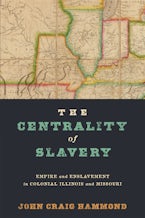Infrastructure was key to British victory in the Seven Years’ War yet was its undoing on the roads to revolution
Roads to Power, Roads to Crisis maps the Seven Years’ War for the American Interior and reconstructs the inter-imperial roots of the American Revolution. Centering on the eighteenth-century geopolitical struggle for the greater Ohio Valley, Alec Zuercher Reichardt reframes a familiar story by uncovering the larger imperial competition to gain, control, and exploit communication networks across North America and the Atlantic. Through a comparative perspective, Reichardt traces British infrastructural development alongside the efforts of other major powers in North America, including the French Empire, the Haudenosaunee Confederacy, the Cherokee Nation, and other Indigenous polities.
By the height of the Seven Years’ War, this contest for the American Interior had propelled the British to construct imperial communications infrastructure that outpaced and overwhelmed the efforts of France, its primary European rival, and that co-opted key Native information and transportation channels. British success in wartime was borne not just of a newly enlarged and centralized infrastructure state, but also of that expanded state's ability to exploit extra-governmental circuits, notably metropolitan and colonial newspapers and Indigenous ally networks.
The rise of the British North American infrastructure state, however, was also the empire’s undoing. The same roads, printing presses, and postal networks constructed and funded by the War Office and imperial treasury also became the primary routes of incendiary print, popular mobilization, and propaganda. In the wake of the Seven Years’ War, the ligaments of the British empire inadvertently provided the material channels for those who sought to oppose the British state. The roads that led to British imperial power, then, became routes to imperial crisis.











